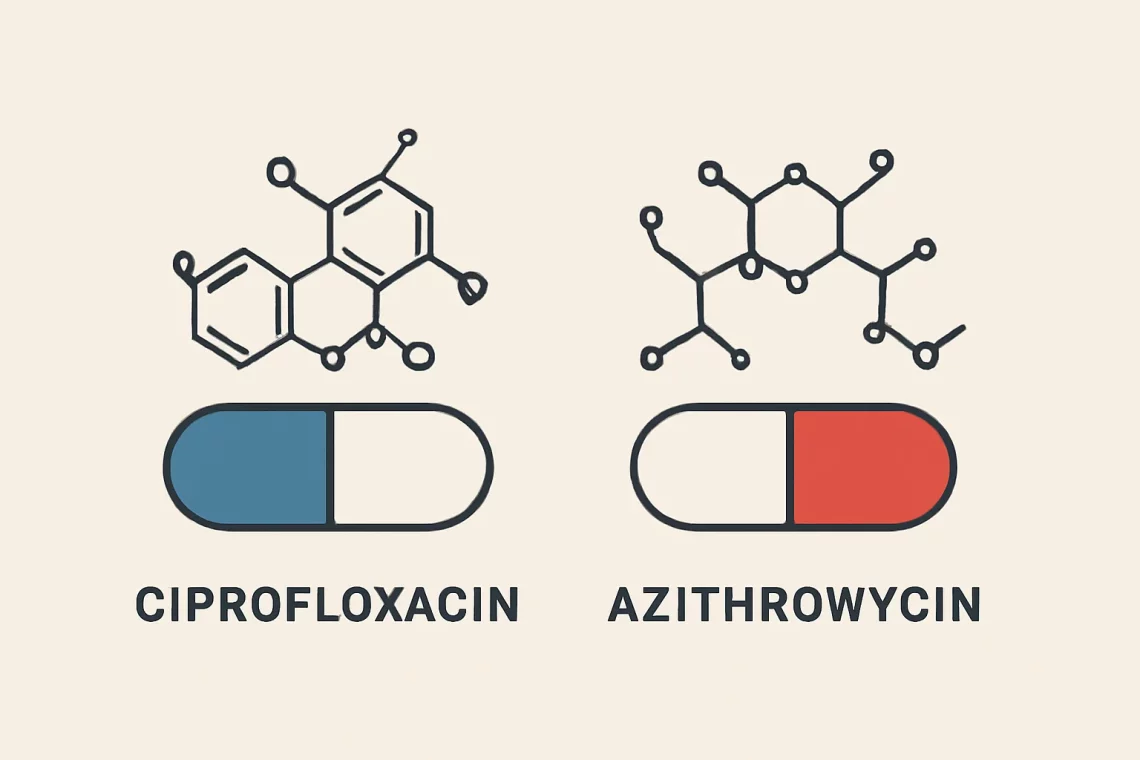-
Cephalexin vs Keflex: Understanding Their Differences and Uses
Cephalexin and Keflex are two terms that often arise in discussions about antibiotic treatments. For many, the distinction between these two names may seem trivial, but understanding the nuances can be crucial for effective treatment. Cephalexin is the generic name for a specific antibiotic that is classified as a cephalosporin. On the other hand, Keflex is a brand name under which cephalexin is marketed. This distinction is essential for patients and healthcare providers alike, as it influences prescription practices and patient education. Antibiotics like cephalexin play a vital role in modern medicine, helping to combat bacterial infections that can range from mild to severe. They work by interfering with the…
-
Amoxicillin vs Omnicef: Which Antibiotic Is Right for You?
Amoxicillin and Omnicef are two antibiotics that have gained significant attention in medical discussions due to their effectiveness in treating various bacterial infections. Both medications belong to different classes of antibiotics, which means they operate through unique mechanisms to combat bacteria. The choice between Amoxicillin and Omnicef often depends on the specific type of infection, the patient’s medical history, and the potential for antibiotic resistance. Understanding how these medications work, their spectrum of activity, side effects, and the situations in which they are best prescribed can help patients and healthcare providers make informed decisions. With the rise of antibiotic resistance, choosing the appropriate antibiotic is more crucial than ever. Both…
-
Azithromycin vs Clindamycin: Key Differences and Uses Explained
Azithromycin and clindamycin are two widely used antibiotics that play a crucial role in treating various bacterial infections. Though they belong to different classes of antibiotics and have distinct mechanisms of action, both are effective in their respective applications. Understanding the differences and similarities between these two medications is essential for healthcare professionals and patients alike. This knowledge can help in selecting the right antibiotic based on the type of infection, the patient’s medical history, and potential drug interactions. Antibiotics like azithromycin and clindamycin work by inhibiting bacterial growth, but they do so in different ways. Azithromycin is a macrolide antibiotic, while clindamycin belongs to the lincosamide class. Each antibiotic…
-
Clindamycin vs Azithromycin: Which Antibiotic Is Right for You?
Clindamycin and azithromycin are two antibiotics that belong to different classes and are often prescribed to treat various bacterial infections. Both medications are effective against specific pathogens but have distinct mechanisms of action and side effect profiles. Understanding the differences between these two antibiotics is essential for both healthcare professionals and patients. Clindamycin is a lincosamide antibiotic that primarily inhibits bacterial protein synthesis, making it effective against anaerobic bacteria and certain Gram-positive organisms. It is often used for skin and soft tissue infections, as well as respiratory tract infections. Azithromycin, on the other hand, is a macrolide antibiotic that also inhibits protein synthesis but acts on a broader spectrum of…
-
Clindamycin vs Keflex: Which Antibiotic Is Right for You?
Clindamycin and Keflex are two antibiotics commonly used to treat bacterial infections. While both medications belong to different classes of antibiotics and target various types of bacteria, they play crucial roles in managing infections. Understanding the differences and similarities between these medications can help patients and healthcare providers make informed choices regarding treatment options. In recent years, antibiotic resistance has emerged as a significant public health concern, highlighting the importance of selecting the appropriate antibiotic for each specific infection. Clindamycin, a lincosamide antibiotic, is often prescribed for serious infections caused by anaerobic bacteria and certain types of streptococci and staphylococci. On the other hand, Keflex, the brand name for cephalexin,…
-
Cephalexin or Amoxicillin Which Antibiotic is Right for You
The use of antibiotics has become a cornerstone in modern medicine, providing effective treatment options for a variety of bacterial infections. Among the numerous antibiotics available, Cephalexin and Amoxicillin are two commonly prescribed medications. Both belong to the broader class of beta-lactam antibiotics, but they each have unique properties, indications, and mechanisms of action that can influence their effectiveness depending on the specific infection being treated. The choice between Cephalexin and Amoxicillin can be crucial in ensuring optimal patient outcomes while minimizing the risk of antibiotic resistance—a growing concern in the medical community. Understanding the differences between these two antibiotics, including their spectrum of activity, side effects, and potential interactions,…
-
Cephalexin vs Doxycycline: Key Differences and Uses Explained
Cephalexin and doxycycline are both antibiotics that serve critical roles in the treatment of bacterial infections. They belong to different classes of antibiotics, which means they work in distinct ways and target various types of bacteria. Understanding their mechanisms, uses, and potential side effects can help patients make informed decisions when prescribed these medications. Antibiotics have been a cornerstone of modern medicine, providing essential treatments for infections that could otherwise be life-threatening. However, their effectiveness can depend on the specific type of bacteria causing the infection, as well as patient-specific factors such as age, health status, and potential drug interactions. This complex interplay highlights the importance of understanding the differences…
-
Cephalexin vs Clindamycin: Which Antibiotic is Right for You?
Cephalexin and clindamycin are two antibiotics that are commonly prescribed for various bacterial infections. While both medications are effective in treating infections, they differ in their mechanisms of action, the types of bacteria they target, and their side effects. Understanding these differences is crucial for both healthcare providers and patients to ensure the appropriate antibiotic is chosen for a specific infection. In a world where antibiotic resistance is an increasing concern, selecting the right medication becomes even more vital. This article aims to delve into the characteristics of cephalexin and clindamycin, examining their uses, effectiveness, and potential side effects. By the end of this discussion, readers will have a clearer…
-
Clindamycin vs Doxycycline: Which Antibiotic Is Right for You?
Clindamycin and doxycycline are two commonly prescribed antibiotics that serve as effective treatments for various bacterial infections. Both medications belong to different classes of antibiotics and have distinct mechanisms of action, making them suitable for specific types of infections. As antibiotic resistance becomes an increasing concern, understanding the nuances of these medications is essential for healthcare professionals and patients alike. Clindamycin is often utilized for treating skin infections, respiratory tract infections, and certain dental infections. It is particularly effective against anaerobic bacteria and certain strains of staphylococci. On the other hand, doxycycline is a tetracycline antibiotic that is effective against a broad range of bacteria, including those that cause respiratory…
-
Ciprofloxacin vs Azithromycin: Comparing Antibiotics for Infections
Ciprofloxacin and Azithromycin are two widely used antibiotics that belong to different classes of antimicrobial agents. Each drug has its unique mechanism of action, spectrum of activity, and clinical applications. Understanding the differences and similarities between these two medications is crucial for both healthcare professionals and patients alike. Ciprofloxacin, a fluoroquinolone antibiotic, is known for its broad-spectrum efficacy against a variety of bacterial infections. It works by inhibiting bacterial DNA gyrase and topoisomerase IV, enzymes that are essential for bacterial DNA replication, transcription, and repair. This action leads to the death of susceptible bacteria. Ciprofloxacin is often prescribed for respiratory, urinary tract, and skin infections, as well as specific gastrointestinal…







































